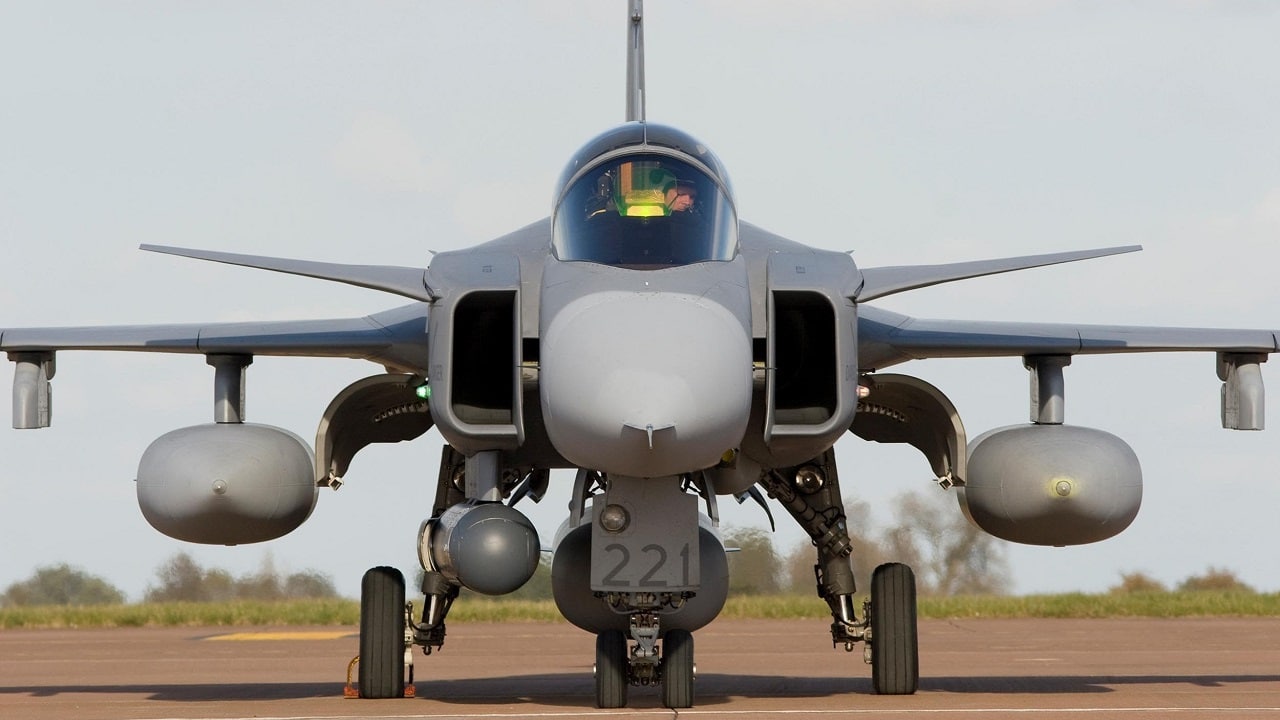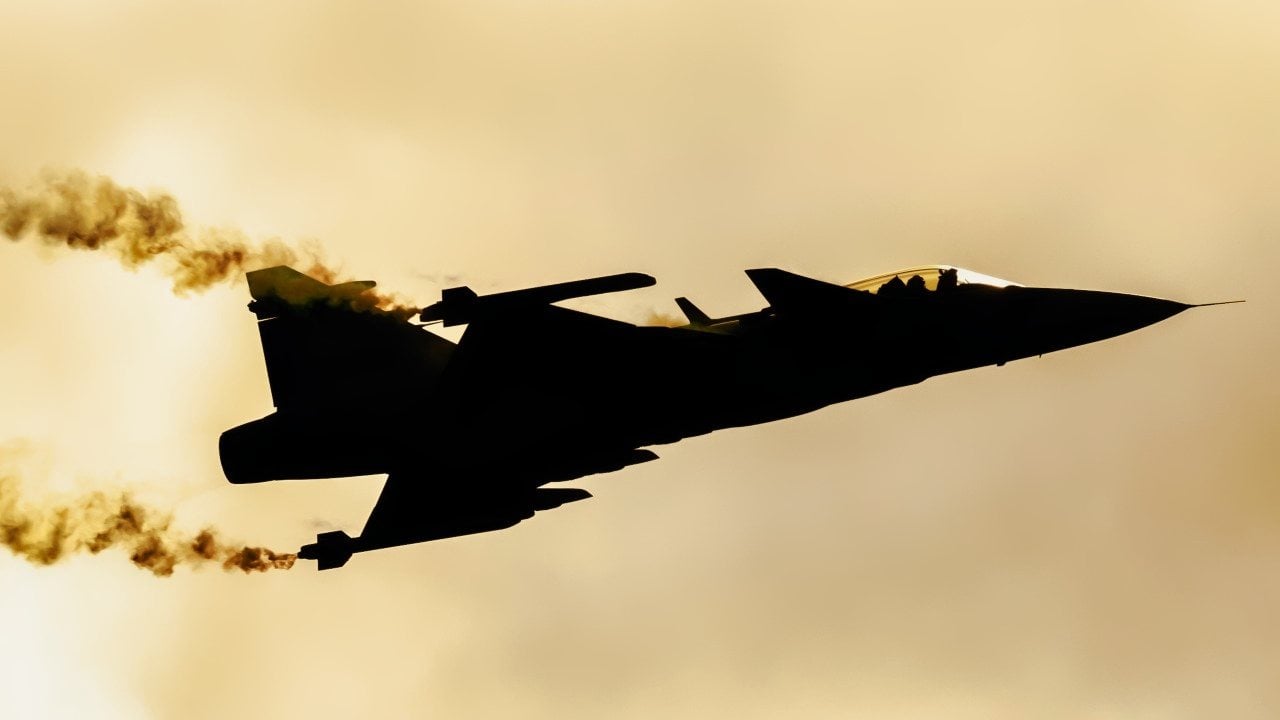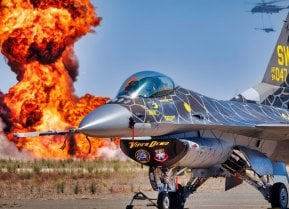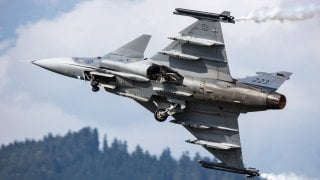How the JAS 39 Gripen Fighter Crushed China's Air Force in a Wargame
In joint exercises between the Royal Thai Air Force's JAS 39 Gripen fighters and the People's Liberation Army Air Force's (PLAAF) Su-27s, the Gripen demonstrated superior performance.
Summary: In joint exercises between the Royal Thai Air Force's JAS 39 Gripen fighters and the People's Liberation Army Air Force's (PLAAF) Su-27s, the Gripen demonstrated superior performance, excelling in beyond visual range (BVR) combat. The Thai fighters achieved 88% of their kills at 19 miles or greater, highlighting their effectiveness in long-distance engagements. The PLAAF's Su-27s faced challenges, with Thai pilots downing 41 Su-27s while losing only nine Gripens. The outcome underscored the Gripen's capabilities and revealed the PLAAF's learning curve in missile avoidance strategies.
JAS 39 'Shot Down' Chinese Fighters in Joint Exercises
Though Thailand has remained the oldest U.S. ally in Asia, the ties have been "complicated" by a 2014 military coup, and Bangkok sought to strengthen its relations with China while it has made several defense procurements.
Beginning in August 2015, Thailand further held the "Falcon Strike" joint exercises with the People's Liberation Army Air Force (PLAAF) – with the Falcon Strike-2023 joint exercise between Chinese and Thai air forces lasting 21 days in Thailand, where participating troops from both countries carried out training subjects including air support, land assault, joint air defense, and large-scale deployment, which effectively enhanced their combat and joint operational capabilities.
Thailand employs aircraft of Western origins and adopts combat tactics based on a Western model, which analysts have warned could be good additions to the PLAAF's domestic training program.
However, it was during the inaugural event that was noted for highlighting the capabilities of the Royal Thai Air Force's Swedish-built JAS-39 "Gripen" multirole fighter.
Sweden's Sleek JAS 39 Gripen Fighter in the Crosshairs
The JAS 39 Gripen (Griffin) was initially designed to replace the variants of the Saab 35 Viggen and Saab 37 Draken combat aircraft. Development began in the late 1970s when the government in Stockholm began to explore the development of an aircraft that could be capable of fighter, attack, and recon missions. After evaluating a number of existing foreign aircraft including the American F-16 and F-18 fighters, the Swedish Parliament decided in June 1982 to move forward with the Swedish project.
Development of the Gripen was part of a joint effort by an industrial consortium that consisted of Saab, Saab Microwave Systems (formerly Ericsson), Volvo Aero Corporation, Saab Avitronics, and FFV Aerotech, the Gripen was the first Swedish multirole combat aircraft – capable of conducting interception, ground-attack, and reconnaissance. The single-engine, multirole-combat aircraft was designed with a single pilot, but the B and D versions were also developed featuring a longer canopy for a crew of two.

The fourth-generation multirole fighter was first flown in December 1988, and it entered operational service with the Swedish Air Force in 1997. A total of 204 aircraft in three batches had been ordered by Swedish Air Forces, which to date has taken delivery of 74 aircraft.
A total of 158 Gripens were produced as of 2016, and it was exported around the globe. Current operators include Brazil, the Czech Republic, Hungary, South Africa and Thailand, while the United Kingdom's Empire Test Pilots' School also operates Gripens in a training capacity.
It was the dozen in service with the Royal Thai Air Force that likely took Beijing by surprise.
The Oldest Asian Air Force
The Royal Thai Air Force, which was established in 1913 as one of the earliest air forces of Asia, is actually older than the PLAAF – and while not as large, is still one of the most capable and equipped in the region. It has historically employed U.S. hardware and is seeking to procure F-35 fighter jets from Lockheed Martin to replace some of its aging F-16 models.

However, as noted, it has a dozen Swedish-made Grippens in service – an aircraft that is considered one of the best non-stealth fighters in the world today. That fact was brought home in the first-ever joint exercise between the Chinese and Thai air forces.
According to a report from Aviation International News, an early December 2019 report from inside China revealed previously unreleased technical details of PLAAF's Russian-built Su-27s losing a majority of engagements in a November 2015 joint exercise with the 701 Fighter Squadron of the Royal Thai Air Force (RTAF), which operates eight Saab JAS-39C and four JAS-39D Gripens.
David Axe had previously written for The National Interest that the PLAAF flew the Shenyang J-11, an aircraft derived from the Soviet-designed Sukhoi Su-27, and manufactured by the Shenyang Aircraft Corporation (SAC). It is unclear if the PLAAF fighters were in fact Su-27s or the similar J-11s – but the outcome was the same.

"The JAS-39 performance was at its worst inside the within visual range (WVR) envelope. Over a two-day period, PLAAF pilots shot down 25 Gripens at a loss of only one Su-27. The Su-27 has an advantage over the performance of the JAS-39 due to its more powerful Salyut AL-31F engines, and the Swedish aircraft was handicapped in that it was equipped with the older-generation AIM-9L Sidewinder instead of the current-generation Diehl IRIS-T missile," the trade magazine of record reported.
The situation changed greatly once the exercise transitioned to beyond visual range (BVR) combat, where the superiority of the JAS-39 became readily apparent. Thai pilots flying the Swedish aircraft shot down 41 Su-27s over a period of four days with a loss of only nine JAS-39s.
The Royal Thai Air Force's Gripens achieved 88 percent of its kills at 19 miles or greater, while the Su-27 had just 14 percent of its kills at this range. The RTAF also had 10 kills at a distance of more than 31 miles compared with zero long-distance kills by the Su-27. Chinese pilots were simply not experienced in avoiding missile shots, while they failed to take evasive actions for missiles with different ranges.

Moreover, as AIN also reported, "In subsequent exercises, the PLAAF fared better by sending the Chengdu J-10A - and then in 2019 the J-10C - in place of the Su-27."
Perhaps Beijing's pilots learned valuable lessons as well. That should be the bigger concern – especially as Thailand holds future Falcon Strike exercises.
Author Experience and Expertise
Peter Suciu is a Michigan-based writer. He has contributed to more than four dozen magazines, newspapers, and websites with over 3,200 published pieces over a twenty-year career in journalism. He regularly writes about military hardware, firearms history, cybersecurity, politics, and international affairs. Peter is also a Contributing Writer for Forbes and Clearance Jobs. You can follow him on Twitter: @PeterSuciu. Contact the Author: [email protected].


